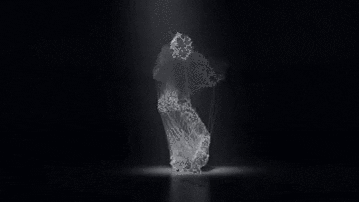Frida (2002) “In the aftermath of the Mexican Revolution, the country’s artists forged a new painterly vocabulary, which fused European modernism with local folkloric traditions, and became a global phenomenon.” After years of problems getting this screenplay produced, Julie Taymor was hired to direct this biopic based on a biography of Frida Kahlo. Selma Hayek throws herself into the role of an authentically original painter, physically disabled, who married the socialist muralist Diego Rivera, and led a tempestuous relationship with everybody, including Leon Trotsky. The intellectual and social atmosphere of Mexico thrives in this beautifully constructed color masterpiece, incorporating animation into the narrative.
The heart is vulnerable, exposed. Blood

Everywhere. A handrail pierces her

Body. Pelvic bones and uterus flood

Miscarriage. Anatomy, fragile as air.
A woman yet not a woman. She paints

Prosthetics, while Diego climbs scaffolds

At Rockefeller Center to elevate

Lenin in a capitalist stronghold.
At home, she dresses Victorian Jew,

Colonial hostess in a white blouse.

In private, Tehuana patterns pulse through;

She clutches an amulet of her spouse.
She designs gardens at Casa Azul:

Mexican pyramid; lava rock paths;
Cacti, echeverias; marigolds rule,

Some pressed inside Whitman’s Leaves of Grass.

When you are the first of your kind, you flail
About, making your own rules, wild at sex

As at art, belittled because female,

Bedding a mistress of your cheating ex.
Celebrating what is largely ignored,

Frida takes the indigenous to heart.

Endures multiple surgeries; restored,

But never cured, body becomes her art.
Breton’s “ribbon around a bomb” retains

Her Aztec pre-Columbian jadeite thread.

Surrealism’s born from her body’s pain.

Trotsky had an icepick thrust in his head.
Without her, where would performance art be?

Unflinching, she dissected identity.

Francesca Woodman, Karen Finley,

Marina Abramović, — Frida’s key.

[Disposable Poem August 22, 2016]
Dr. Mike
Frida Kahlo at Casa Azul









